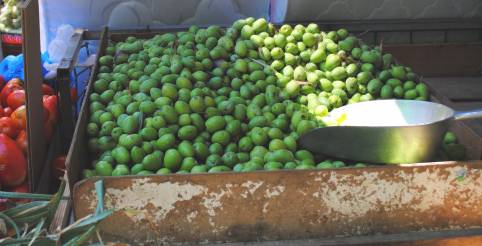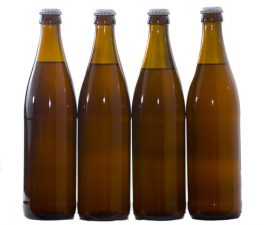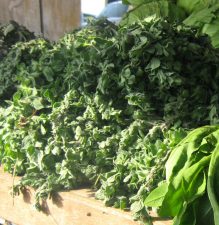 Smooth and heavy – a guide to choosing the best raw olives for pickling at home.
Smooth and heavy – a guide to choosing the best raw olives for pickling at home.
There’s nothing like the sensation of running your fingers through a heap of smooth, heavy, fresh olives. And now is the season. Open markets of the Middle East display stands heaped with the green and purple fruit, perfect for taking home to pickle in your own kitchen (as Green Prophet shows you how to pickle olives in this post). It sounds intimidating, but the process really doesn’t take much work, just a fair amount of time waiting for things to happen by themselves. If you live in Israel or anywhere in the Mediterranean, you may find good raw olives in one of these open-air markets.
So how to pick the best olives? To start with, choose olives that look and feel smooth and heavy. Olives are susceptible to a fungus that’s first visible at the stem end, so check a handful or two before committing yourself to buying. Stir the heap with a finger and notice if there are many rotten or severely bruised olives. If so, move on to the next vendor.
If you’re lucky enough to live where wild olive trees flourish – usually on abandoned land that was farmed long ago – you’ll be able to harvest organic fruit. Otherwise you must ask the vendor if they are sprayed.
If you have no choice but to buy non-organic, console yourself with the fact that the olives will soak in fresh water changed daily for at least a week, if not two, so that much of the pesticide will have been washed out. Brining further penetrates their flesh and hopefully leaches out even more undesirables.
There are hundreds of varieties, but most markets offer only two or three, at different stages of maturity. Green olives are immature. It may take as long as two weeks for them to yield their bitterness, and a month (or more) until the brine has fermented them into tastiness. As immature olives ripen, their skin turns reddish-purple. These demand less soaking and brining time. Black olives are mature and ready to eat soonest. A batch is ready to eat when its taste suits you – it’s as simple as that.
Experiment with a couple pounds or a kilo of olives in each stage of maturity, or with two different types. Make a note of which you liked best for next year. If you and your family love olives, I can guarantee that no matter how many kilos you pickle, they’ll be gone fast, and you’ll wish you had made more.
More about the noble olive here on Green Prophet:
- A 2000-year-old olive tree in Israel
- Power your wood stove with olive waste
- Olive oil pioneer fixes his heart with olive oil
Photo of raw green olives at shuk Ramleh, Israel, by Miriam Kresh.




As Salaam O Elakum
Congratulations on getting olives into one of projects.
Allah has gifted us with Pakistan which is full of His bounties.
Olive is mentioned in The Quran as Blessed Tree.
First Most, our farmers/households living in these areas have small parcel of lands, but not very good returns due to “middle man” specifically, cash strapped, and then technology. Also what they grow is not very good priced crops. This area has potential of growing Olives, the model villages for different crops, with Olive’s trees as long term investment, which will give additional income to farmers.
I have been involved in “Olive Pakistan” for last four years or so.
I have vast experience in mobilizing, encouraging, farmers and land owners in Khyber Pukhtunkhawa & Punjab the regions specifically Naushera, Mardan, Swat, Malakand, Deer, & Attock, Rawalpindi, Chakwal, Khushab Districts.
I believe one needs dedicated personnel to run this project successfully, those who are madly in love with Olives. I have some concepts to improve our farmers/households in the above areas through Olives. We started with 100KG four years ago and last year the Olive fruit collected by us is more than 2500KG. The next year it will reach 5,000 as per our contacts with Olive grower’s number of trees which has reached commercial harvest have increased two folds. The trees by small farmers/landowners had been added every year, but boom needs inputs like Olive Saplings.
One such plan is to provide olive saplings to small farmers at reduced rates, and assist them.
We are looking for investors for olive orchards plantations,
we are looking for donors to assist us in distributing plants of olives to poor farmers, so they can add earnings in years to come and for better living.